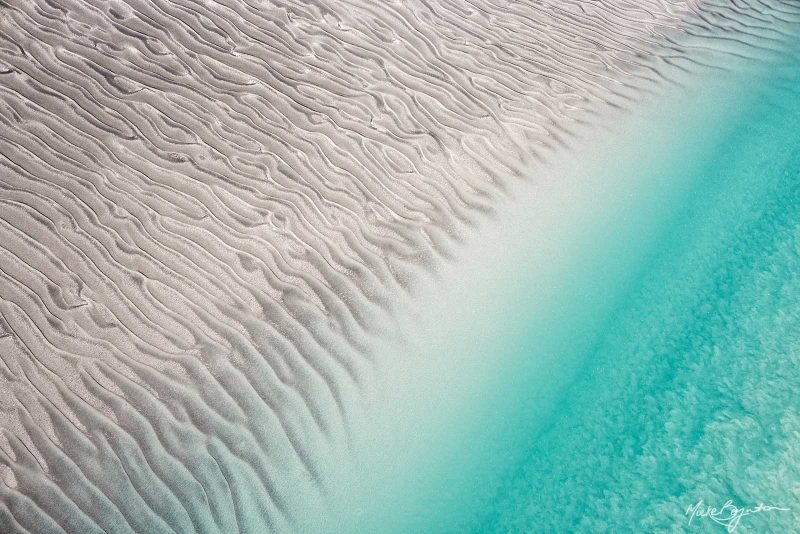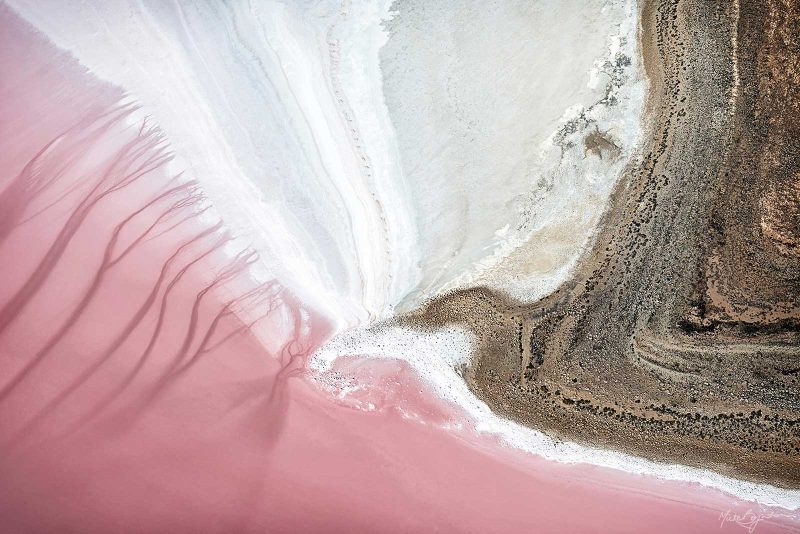Landscapes on the Wing: Photography From an Aircraft

The first time I ever had the chance to participate in an aerial photography shoot was in 2012.
It was over the inter-tidal mudflats of the East Kimberley region of Western Australia, and it left me absolutely stunned. We flew in a helicopter, and I was fascinated by the tree-like formations below.


It was as though nature had painted a gigantic canvas that could only be seen from above.
Unfortunately, as it was my first flight, I was so caught up in the moment that I miscalculated how fast my shutter speed needed to be and most of my captures ended up blurry.
Lesson learned!

I have chartered many helicopter flights over the mudflats since then, and I never cease to be amazed at the ever-changing shapes created by the tides and weather.
During the wet season (December to May), the tree-like patterns tend to be flooded. But when the dry season arrives each year, the water drains out to sea, leaving these spectacular formations behind.
Action-packed photoshoots
My abstract aerial photographs often convey a sense of peace and tranquillity. However, the reality of what I’m experiencing when I take these photographs is anything but tranquil!
I always request for the doors to be removed if I shoot from a helicopter, and if I shoot from a plane, it’s either through an open window or a sliding door.

Either way, the wind whips through the aircraft and everything flaps about, including camera straps and hair. And the noise is deafening, even with headphones!
Although I always provide a flight path before take-off, there are often unexpected elements that require me to direct the pilot to fly higher, lower, or around in an orbit.
If I miss the shot because we’re too close or too far away or not at the right angle, we circle back and try again. There is only a split-second to get it right!
The combination of all these factors means it’s a very hectic, chaotic experience – very different from the image captured.

Capturing aerial abstracts
The Kimberley coast has some of the largest tidal movements in the world, and the difference between low tide and high tide can be around 10 metres!
As a consequence, there are several shallow areas of the ocean which are only revealed at low tide, and these can be especially beautiful.
One of these areas is near Broome in Western Australia, where the turquoise water overlays pristine white sand creating intriguing shapes and patterns.

I get so much joy from taking abstract aerial photographs.
A big part of the thrill is actually flying in a helicopter or light plane, but I also love the challenge of capturing an abstract photograph that makes people stop and wonder.
Symbolism in photography
Some of my favourite artists at school were Piet Mondrian, Wassily Kandinsky, and the Papunya Tula artists (Aboriginal “dot painters”). I was fascinated by their ability to elicit an emotional response using only the basic elements of line, shape, pattern, colour, and texture.
But for me, the most powerful aerial photographs are the ones where you can interpret a form or a figure in them – not the actual subject matter, but rather, a symbolic subject.
Further south as you travel down the Western Australian coast, you can find an area called Shark Bay – or as its Aboriginal Traditional Owners call it: “Gathaagudu”, which means “Two Waters”.

There is a fascinating area that used to be completely underwater tens of thousands of years ago, but then the ocean level receded, creating land-locked salt lakes called “birridas”.
The soil inside these circular salt lakes is chalky and pale, but the soil surrounding them is very high in iron, resulting in a brilliant rust-red colour.
When two birridas intersect, they create an hourglass shape. I named this photo “Sands of Time” because, to me, it symbolises the ancient and ongoing Aboriginal connection to this region for the Malgana people.

Australian Aboriginal artists have long depicted their sacred places from above – particularly the Papunya Tula dot painting artists whose works have inspired me for many years. These photos are a bit like nature’s dot paintings!
Another symbolic photo taken at Gathaagudu (Shark Bay) is one that I’ve called “Ocean Deity”, as it looks like a woman’s face. To me, she represents Mother Nature, and at the bottom of the frame, I see a hand curved up protectively, almost hugging the earth.
At a distance, her peaceful elegance is what most people respond to, but I see a deeper meaning in this photo.
Gathaagudu is home to more than 6,000 marine turtles, including the globally endangered green turtle (Chelonia mydas) and loggerhead turtle (Caretta caretta).

It is also an area where people love to go exploring in their 4WDs. If you look closely, you can see that her eyes have been ‘sewn shut’ by tyre tracks.
There are many areas of coastline in the North-West of Australia that are dotted with turtle nests from late November to March.
When people inadvertently drive their vehicles over the turtle nests, they compact the sand in the nests and the hatchlings can’t climb out.
I was so fortunate to capture this beautiful Geisha-like goddess – it is one of my favourite photos and has won many awards.
Colourful salt lakes
Salt lakes are wonderful locations to photograph abstract aerials. Kati Thanda – Lake Eyre is a huge lake in South Australia that only fills on average once every ten years. The rest of the time it is mostly dry.
Following a period of flooding, as the water begins to evaporate, part of the lake turns a spectacular pink colour due to the presence of beta-carotene pigment caused by the alga Dunaliella salina.
The other amazing event that the flooding precipitates is the explosion of waterbirds which descend in their thousands.
In 2015, I travelled 3,600km to arrive at the lake during a flooding event and chartered both a helicopter and a light plane to photograph this incredible spectacle.
“Kati Thanda – Taking Flight” is my favourite photo from this trip.

It shows the magnificent natural pink colouration of the lake, but the darker area looks to me like the silhouette of a bird in flight – symbolic of the incredible profusion of birds that flock to the area.
We circled this formation several times so the pilot could bank the helicopter steeply and I could capture the shot from directly above.
Iceland from the air
The most incredible aerial views I have ever photographed were flying over the “braided rivers” in Southern Iceland.
Braids of milky water travel from beneath the glaciers out towards the North Atlantic Ocean, spreading out across vast outwash plains.
Suspended rock particles cause milkiness, the yellow water indicates the presence of sulphur, and the reddish colours are caused by dissolved ferrous iron. It is an utterly breathtaking sight to behold.

In conclusion
People often assume that I use a drone to capture my photographs, but most of my aerials are taken in areas that would be impossible to access with a drone as they are so remote.
Instead, I charter flights in helicopters and small planes as that allows me to use my DSLR camera and capture high-resolution images that can be printed large.
The primary reason for not using a drone is simply because I love to fly. Photography for me has always been about the experience, and every one of these flights gave me a vivid and lasting memory to treasure!
Nature is an incredible artist.
My hope is that when people view my photos, they marvel at nature’s intricate beauty and perhaps experience a little of the awe and wonder I feel when I view these places from the air.





